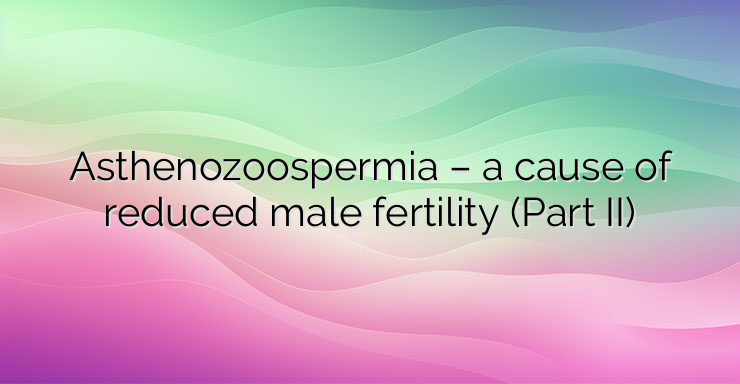First part of the material Signs and diagnosis The condition is asymptomatic. The only sign of its presence is infertility in the family. Therefore, when pregnancy in the family is delayed if desired, one of the first tests that the married couple should undertake is the spermogram. The causes of infertility in the family can be as much due to problems in the woman as in the man. The diagnosis of asthenozoospermia is made after a series of tests that exclude or confirm the presence of infection, inflammatory processes, and obstruction of the seminal ducts. The quality of the ejaculate is assessed after examination – spermogram. The ejaculate is given for examination after 3 to 5 days of sexual abstinence, excluding the use of alcohol and medication. The material must be delivered to the laboratory within an hour. For the quality and safety of the test, it is recommended that it be performed in the laboratory of a specialized clinic for reproductive health. In the normal state, the sperm looks gray-white in color, sticky and has a specific smell. The volume of the ejaculate must be at least 2 ml, the amount of spermatozoa over 20 million in 1 ml with the indicated motility indicators. The degree of fluidity of the semen is also important: increased stickiness is associated with difficulty in sperm movement. The alkalinity of the semen should be ph — 7.2-8.0. Normally, in the acidic environment of the vagina, most sperm die in the first few hours after intercourse. Seminal fluid with high alkalinity neutralizes the acidic environment of the vagina for a while and enables active spermatozoa to move into the uterus. If changes from the norm are detected in the spermogram after 10-14 days, a re-examination is undertaken. If there are few motile spermatozoa in the semen, this significantly reduces the chances of conception. However, even the minimal amount of motile spermatozoa makes pregnancy possible. Treatment Treatment depends on the causes of asthenozoospermia. In congenital and genetic pathology, the condition does not lend itself to therapy. In the remaining cases, treatment usually succeeds in restoring the release of motile spermatozoa. In case of asthenozoospermia, a complex of vitamins and medications are prescribed, which improve blood circulation in the testicles. In the case of unresponsive asthenozoospermia and desire for a child, methods of assisted reproductive technologies are used.


Leave a Reply